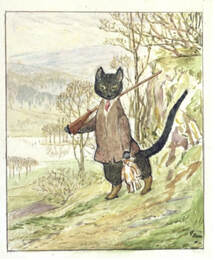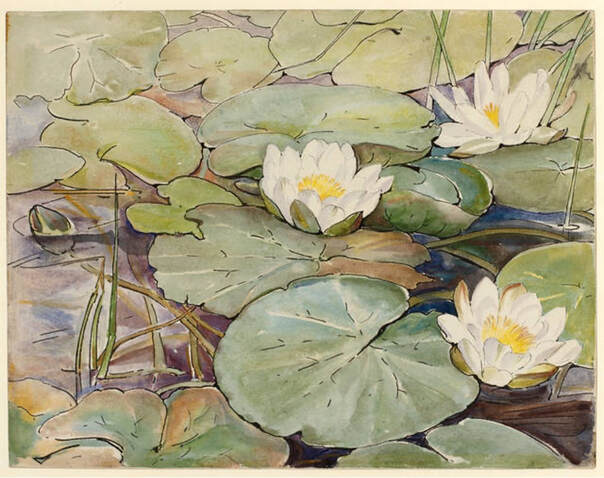The exquisite illustrations immediately drew readers in and her non-sanitized stories entertained both parents reading aloud to children and children just beginning to figure out new words for themselves. Children have always appreciated some gore and mildly perilous situations: note that in The Tale of Peter Rabbit, Peter’s father has previously been “put in a pie by Mrs. McGregor” and Mr. McGregor is a perfect, mildly scary villain. The realism and charm has kept the books in print for over one hundred years and inspired numerous writers, illustrators, products, pilgrimages, movies, and spin-offs.
From the introduction:
“This cookery book was inspired by the works of Beatrix Potter and her love of traditional British cooking. Author Sara Paston-Williams, who specializes in researching recipes of earlier periods and creating delicious dishes from natural country ingredients, is a great admirer of Beatrix Potter.”
“Beatrix Potter’s little books famously celebrate the pleasures of country life. This cookery book reflects her enthusiasm for one most important feature of country living – the enjoyment of appetizing and wholesome food.”
Even when I have no intention of actually cooking anything from the book, it is a pleasure to read through its chapters, learning tidbits about Beatrix herself or what folks were baking in the 1900s or country food ways and lore. For American readers, a measurement guide and glossary help us figure out puzzling British terms and ingredients. The editors have not relied on everyone’s having read mounds of British novels in preparation for using their book, though I always recommend that course. (I believe Rose would agree.)
Chapters include the usual such as Starters, Fish, and Meat but intriguingly include Herbs and Flowers, Preserves, and Puddings. Of course, I delved right into Breads, Cakes, and Biscuits. Each and every recipe would be perfectly at home on any tea table. On page 133, we see a Potter drawing from The Pie and The Patty-Pan in which Duchess the dog is having pussy cat Ribby over for tea. On page 127, soft light spills onto Lake District baker Mollie Green’s tea room, replete with scones and cakes. We can imagine pussy and Mollie enjoying treats such as Buttered Oat Biscuits or Dear Little Muffins. Herby Soda Bread would be a cozy accompaniment to tea or a hearty soup but the compellingly named Hawkshead Seed Wigs might win my favor. Author Paston-Williams offers these clues in her introduction to the recipe:
“Small cakes of spiced dough, known as wigs, used to be sold in Hawkshead, like many other Cumbrian villages and towns. They were usually eaten at Christmas, dipped into elderberry wine or mulled ale. The original wigs were made with yeast and were split and spread with rum butter while still warm. The more modern recipe is easier and very tasty. Beatrix was a regular visitor to the little market town of Hawkshead for shopping and business.” Who knew?
I first read about the exhibition online, in an article by New Yorker contributing writer Anna Russell, titled somewhat melodramatically “The Secret Life of Beatrix Potter.” The secret part being that she wrote her diaries from age 14 through 30 in very small handwriting, using a self-invented code that wasn’t decoded until 1958. Nothing very alarming seems to have been discovered, save that she was a woman of strong opinions and didn’t want people to read her innermost thoughts, much like many angsty teens of today and yesteryear. Apart from any manufactured drama, the show sounds wonderfully enticing.
I’ll leave you here with my favorite quote from Beatrix herself:
“Thank goodness I was never sent to school; it would have rubbed off some of the originality.”










 RSS Feed
RSS Feed